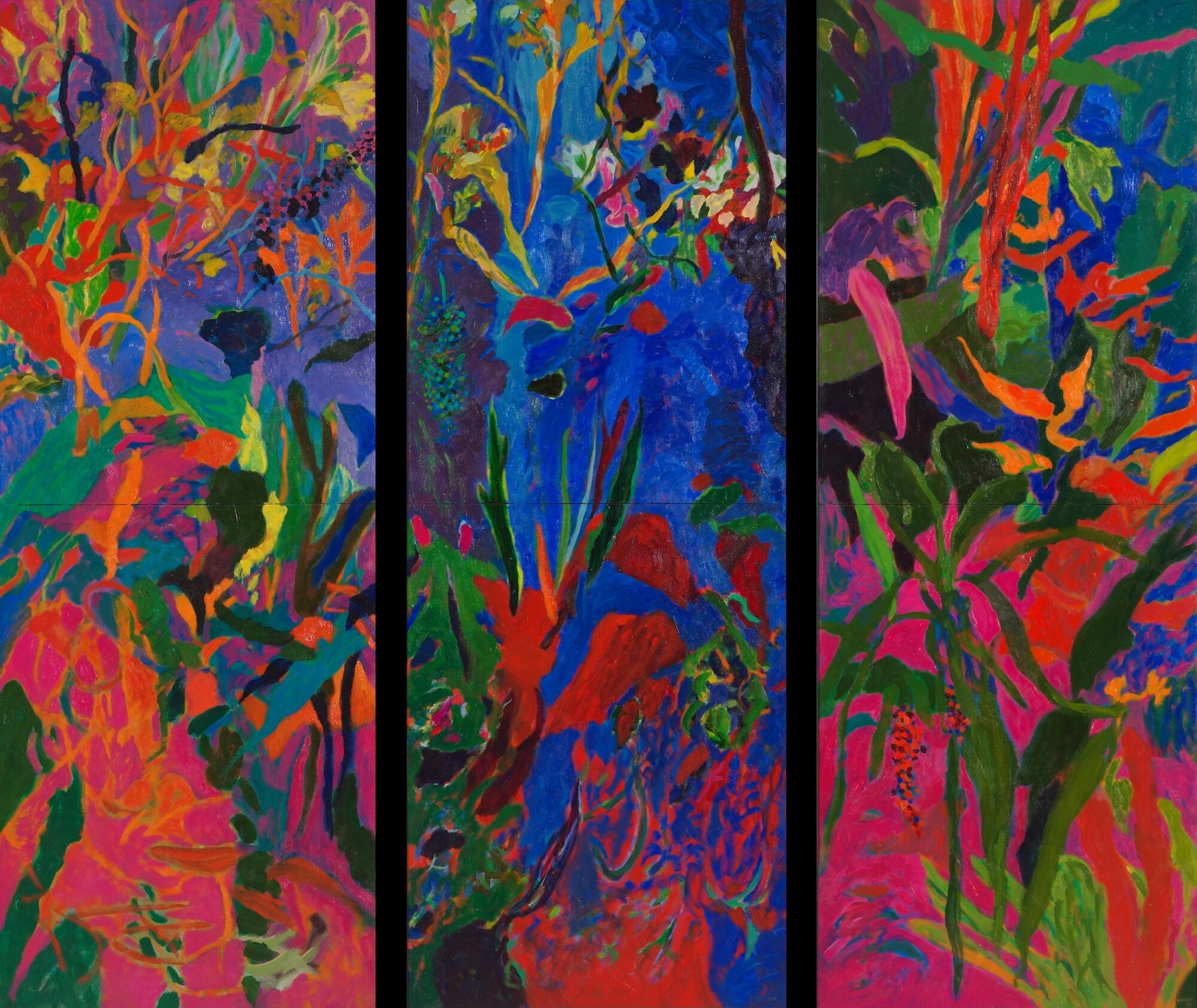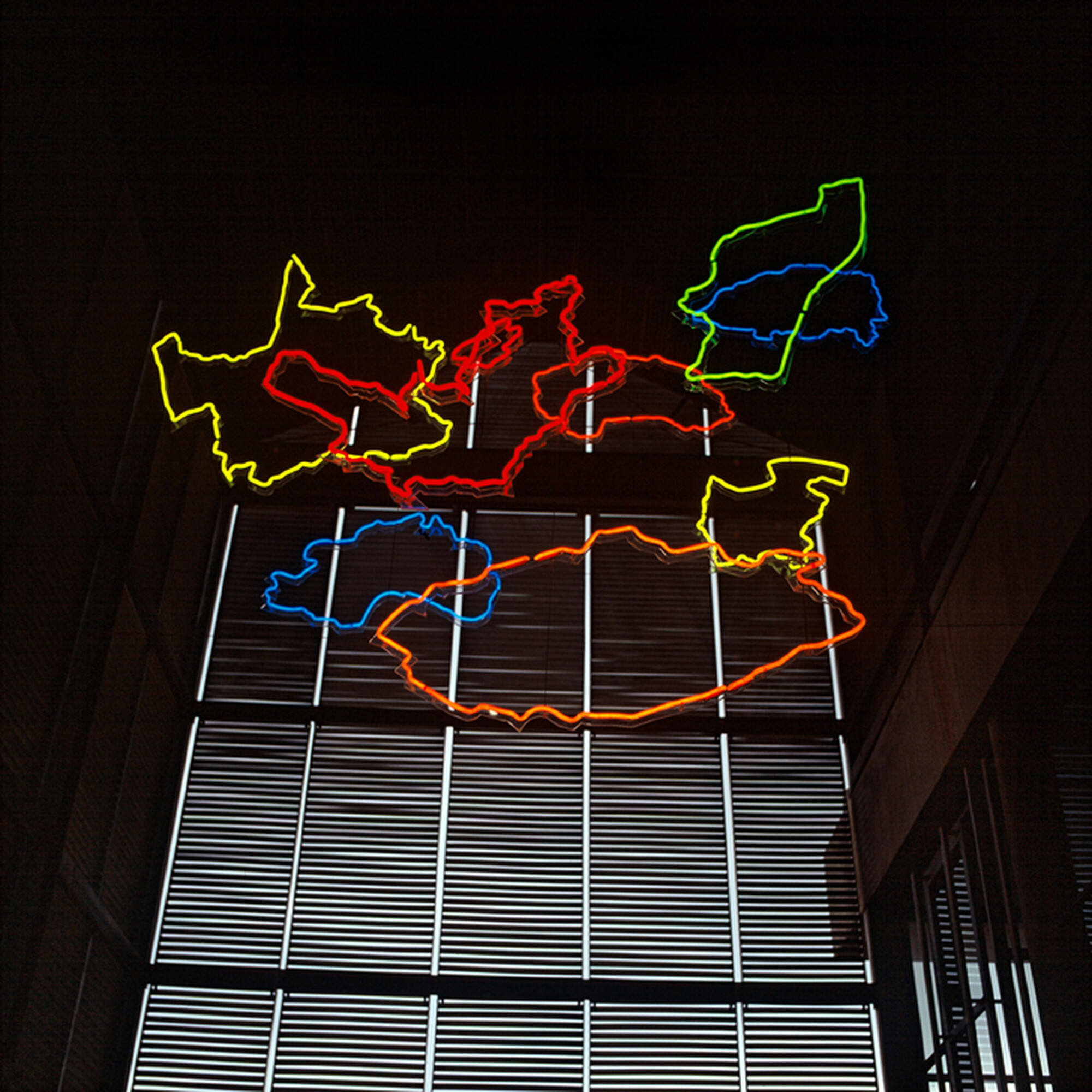Albie Sachs remembers Andrew Verster's contributions to the Constitutional Court Art Collection

Andrew Verster, Hotlands (1993) triptych, acrylic on canvas, 2013mm x 750mm x3. Donated by the artist to the CCAC. Photograph by Gisèle Wulfsohn.
Justice Albie Sachs, former Constitutional Court judge who was integral to the establishment and early days of the Constitutional Court Art Collection (CCAC), remembers the contributions of artist Andrew Verster to the CCAC in light of his passing
Date posted: 28 February 2020
I felt the impact of Andrew’s imagination when I walked into the Sports Hall at the then University of Durban-Westville (UDW) in 1991. It was to attend the first Conference of the African National Congress (ANC) inside South Africa in more than three decades. Beautiful enlarged reproductions of John Ndevasia Muafangejo figures were hanging round the walls. The emphasis was not on strident, tired slogans, not on AK-47s and spears, but on gracious, vulnerable and distinctively African human bodies. I knew it was going to be a great Conference.
Later I learnt that amongst the team that worked long hours at the Durban University of Technology (DUT) under his guidance to prepare the wall-hangings were two young Durban architects, Janina Masojada and Andrew Makin. Seven years afterwards, when the distinguished Indian architect Charles Correa, head of the jury for the international competition for the new Constitutional Court building, opened the sealed envelope containing the names of the winning design team, it was Janina and Andie’s names that came out. And they/we too did not invest the building with stale imported symbols, like the blindfolded Lady of Justice or quotations from the Magna Carta or from dead white male judges. Instead, they/we reached out to South African artists to donate their paintings, tapestries and sculptures, and to enter competitions for key artistic interventions in relation to the fabric and texture of the building.
And Andrew just ‘got it’ every time. He donated a gloriously verdant tropical acrylic triptych which now radiates a sense of joyous energy outside of the judges' lounge.
Then when we had a competition for artwork for the tall majestic doors at the entrance to the Court, who won it? A team of Zulu-speaking woodcarvers from Durban, who, guided by Andrew, carved an applique of twenty-seven wood panels depicting the Bill of Rights with the hand gestures of sign language. And we had another competition for an installation to mark the end of a long descending passageway, who won it? Once again, Andrew Verster. He came up with the idea of portraying the nine provinces of our country floating in the air in an ensemble of neon-lit tubes. The installation, in front of the entrance to the court library, is beautiful, unusual, elegant, striking, thoughtful and accessible - just like the mind and creative sensibility of its maker. Andrew has truly left his mark on South Africa in a most beautiful way. People loved him and they loved the things he produced.
Albie Sachs, Cape Town
23 February, 2020
Also read:
Obituary for Andrew Verster by Carol Brown
Remembering Andrew Verster by Clive van den Berg

Andrew Verster, The Provinces (2003), neon tubing, dimensions vary. Photograph by Ben Law-Viljoen.